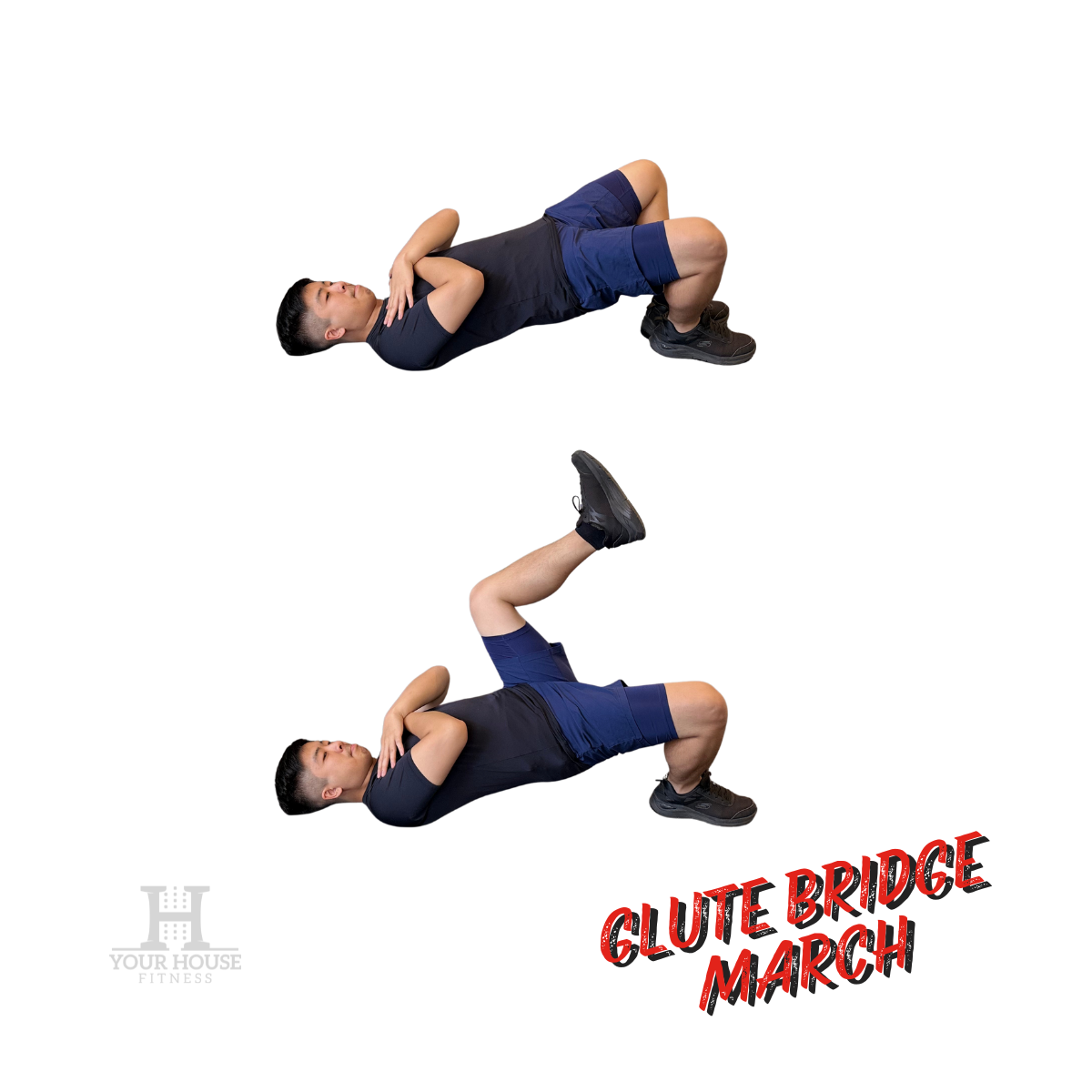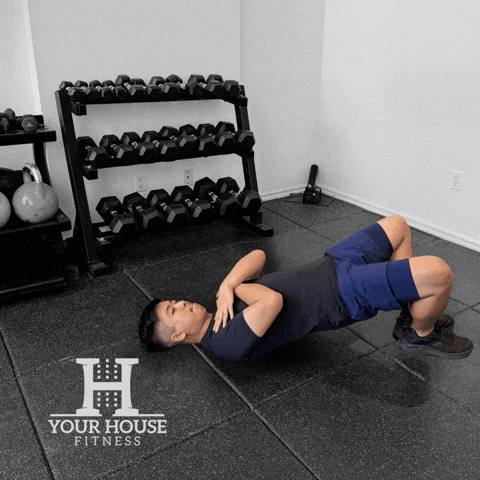Glute Bridge March: How to Do It, Benefits & Muscles Worked
Table of Contents
What is a Glute Bridge March?
A Glute Bridge March is a dynamic variation of the traditional glute bridge exercise that incorporates a marching motion. It is an effective exercise to strengthen the glutes, lower back, and core, while also challenging your stability and balance.
How to Do a Glute Bridge March
Follow these simple steps to perform a Glute Bridge March correctly:
Starting Position:
Lie on your back with your knees bent and your feet placed firmly on the ground, about halfway between fully extended legs and your buttocks.
You can position your feet together for moderate difficulty or slightly wider for an added challenge in balance.
Executing the Exercise:
Engage your core and glutes as you lift your hips up, coming onto the tops of your shoulders.
Make sure your shoulders are firmly pressed into the ground to avoid shrugging.
Your body should form a straight line from shoulders to knees.
Marching Motion:
While keeping your hips elevated and level, slowly lift one knee toward your chest, stopping when it reaches hip height.
Return your foot to the ground gently and switch to the other leg, repeating the same motion.
Maintain controlled movements and reset your hip height between repetitions to ensure consistent form.
Muscles Worked During the Glute Bridge March
The Glute Bridge March targets multiple muscle groups, primarily focusing on:
Glutes (Gluteus Maximus and Gluteus Medius): Primary muscles activated to lift and maintain hip elevation.
Hamstrings: Assist in maintaining hip height and stability throughout the marching movement.
Lower Back (Erector Spinae): Engaged to keep the spine stable and aligned during the exercise.
Core Muscles: Work to stabilize your torso and prevent rotation or dipping of the hips during the march.


